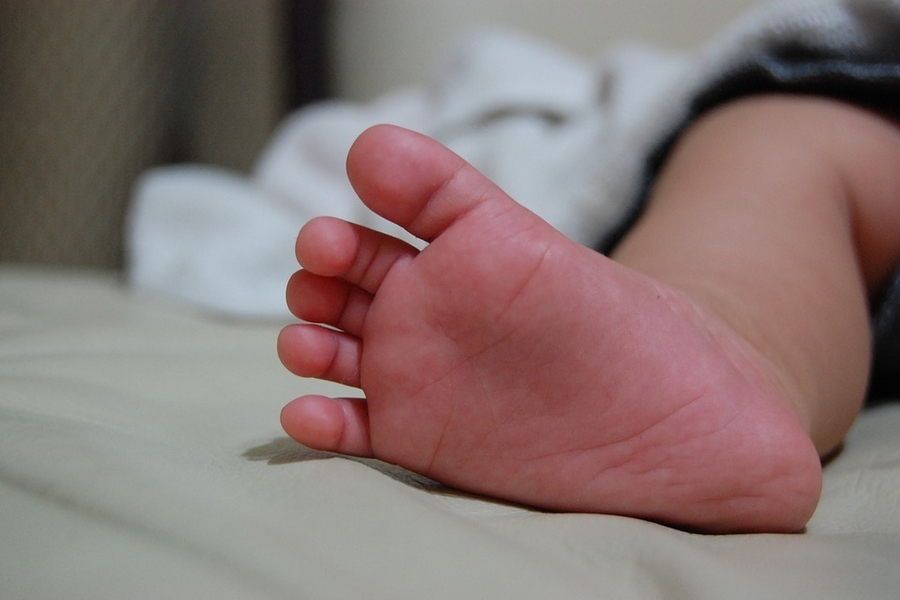
Baby Development Chart 0-6 Months
2 Jul 2018 | 4 min Read
Babychakra
Author | 1369 Articles
Just like your pregnancy, the first few months of your baby are also very dynamic. You will come across new changes and joys every day. However, you may wonder what the ideal development timeline is that you must refer to, and when to visit a specialist if anything is amiss.
Here Is a Baby Development Chart for 0-6 Months
The baby’s weight, length, and head size are important indicators of baby development and keeping track of these will help you assess the growth of your baby. The simple chart below is based on these measurements, as well as other observations.
Month 1
Weight:
The baby weight is likely to go down by nearly 5-7 percent in the first few days but later the baby will regain it.
Movements:
The baby will develop reflexes in hands, legs, and rooting movements.
Head:
The head will not have self-support at this stage and you will have to support it at all times.
Eye focus:
The baby’s vision will be blurred at this stage and they will only be able to focus within a range of 18-45 cm. You will often find them staring at patterns with a high contrast but they will not attempt to reach them.
Others:
• The Startle reflex is normal at this stage and they will shudder to even the mildest of sounds.
• The baby will be familiar with the mother’s voice.
Month 2
Weight:
You may expect a minor increase in weight but no significant changes.
Movements:
• You will find that the baby muscles are better relaxed and the baby twitches less.
• The baby will start unfolding its hands.
• When you give them some tummy time, the baby will try to raise their head to nearly 45 degrees.
• They will start reaching out to objects and develop short time hold.
Eye focus:
The vision will get better and have greater focus. The eyeballs will start moving in sync and they will be able to follow the movements of close objects.
Others:
Some babies may start rolling a little in one direction.
Month 3
Weight:
From now on, you may expect a weight gain close to 1 kg per month.
Head:
They can hold their head up for a few mins to track sounds and close moving objects.
Movements:
• The baby will now be able to stretch out arms and legs.
• They will also be able to successfully move from back to side, i.e., transition towards rolling.
• They will now start discovering their hands and legs and start reaching out to touch objects.
• The grasp duration will be longer now and they will have a stronger grip.
• They will start swiping with hands.
Eye Focus:
They will now start responding to bright objects with high contrast.
Others:
Some kids may start cutting their first tooth, however, this greatly varies per baby.
Month 4
Head:
The baby will start raising its head to about 90 degrees.
Movements:
• The baby will start rolling from front to side.
• They will be able to stretch out and move arms fully.
• The will try to move using head and body on the bed.
• They can be made to sit with support.
• They can hold hands together.
Eye focus:
By this time, they will completely reach out for objects and make some eye contact.
Month 5
Head:
The head will gain quite some support by this time but you will still have to offer some.
Movements:
• The baby can now roll over from front to back.
• They can catch hold of their toes and feet.
• They will wiggle and try to commando crawl on the floor.
• They will be able to transfer objects between hands.
Month 6
Weight:
Babies are likely to double their birth weight by now.
Head:
They will have attained full head control by now.
Movements:
• The baby can sit with back straight.
• They can pick up small objects and keep observing them.
• They can now roll in both directions.
It is important to remember that every baby is different and they will attain the physical milestones in their own time. It is never a good idea to compare the progress with other babies. This chart is an approximate indication and some delays or early occurrences are normal. Do not worry and feel free to consult your healthcare practitioner in case of doubts.
A


Related Topics for you
Suggestions offered by doctors on BabyChakra are of advisory nature i.e., for educational and informational purposes only. Content posted on, created for, or compiled by BabyChakra is not intended or designed to replace your doctor's independent judgment about any symptom, condition, or the appropriateness or risks of a procedure or treatment for a given person.
